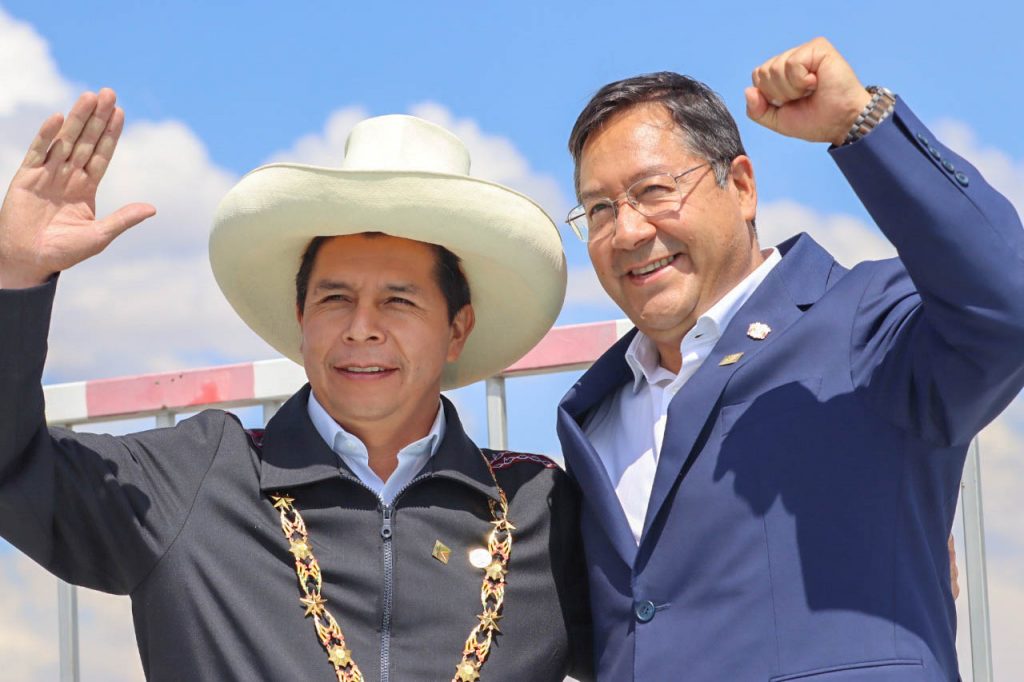Import Substitution is Working in Bolivia
The latest figures show that the MAS government’s economic policies are working and have produced concrete results in a very short time span.
Under the import substitution policies of socialist economist-turned-president, Luis Arce, Bolivia is seeing a marked decrease in imports, while exports rose by 22.4% in February of this year compared to 2021. Data from the Instituto Nacional de Estadística (INE) also shows an increase in non-traditional exports, both in volume and value.
Speaking to Bolivia TV, Vice Minister of Foreign Trade, Benjamín Blanco, broke down some of the latest figures. “Import substitution, which is the vision of our government, is working, because we registered a decrease in the acquisition of products such as food and beverages, fuels and lubricants (..) which decreased by 16% compared to what had been imported last year,” explained Blanco.
Within months of recovering democracy from a year-long coup, Bolivia reached a volume of trade never seen before. 2021 was the first year in which non-traditional exports beat traditional exports and the manufacturing industry continues to grow. Record figures have been reached in exports of products such as gold and metal, gold jewelry, soybeans and soybean products. Export of non-traditional products is up by 14% based on January figures, compared to 2021.
Vice Minister Blanco also highlighted growth in coffee, cacao, and quinoa exports as well as with sunflower products and wood products, both of which are high value-added products. “We continue to grow in products that generate added value, that generate employment for our country.”
Just released figures
As of February of this year, national exports are 22.4% higher than they were during the same period last year, as reported by the National Institute of Statistics (INE). A summary of INE’s just released figures can be found here.



Bolivia’s strategic relationship with Peru
It costs land-locked Bolivia on average 30% more in transportation costs than the rest of the countries of the region to be able to take its production to overseas markets. However, new agreements with Pedro Castillo’s government are now allowing Bolivia to improve its competitiveness in foreign trade.
Movement of Bolivian cargo through Peru’s Port of Ilo increased considerably in 2021 and is expected to reach 200,000 tons by the end of 2022, as a result of binational policies and agreements between Peru and Bolivia. A binational cabinet met in La Paz in December with aims of generating mutually beneficial strategic policies for the two countries.
Vice Minister Blanco explained that just 27,462 tons of cargo was moved through the port in 2020, during the coup year. The number nearly tripled once the MAS returned to government, reaching 72,282 tons of cargo through the port in 2021.
Likewise, he said that from January of this year to date, there has been a movement of at least 60,000 tons of cargo.
“If we are already reaching 60,000 tons, we hope to at least reach 200,000 tons handled during the year 2022,” he told Bolivia TV.
This strategic relationship, spearheaded by President Arce, has resulted not only in improved conditions at the port, but also the reduction of tariffs. The binational cabinet is continuing to coordinate efforts to better conditions at the port which will become an important alternative for Bolivian foreign trade after Chilean ports.
Comunidad Andina
Bolivia is also supporting wider economic revitalization initiatives in the region. Vice Minister Blanco recently took part in a meeting of Foreign Ministers and Trade Ministers of the Andean Community held in Quito. The meeting saw the approval of the creation of the Committee of Government Authorities in Indigenous Peoples. Blanco says that the Committee, which has always been promoted by Bolivia, will seek greater participation of indigenous peoples from all four Andean countries in the integration process.
Ministers looked at possible coordinated joint actions to contribute to economic and social recovery within the sub-region. One positive advance was made on the issue of international roaming: Andeans will be able to circulate within the Andean Community without paying roaming charges to use their cell phones.
Another initiative being discussed is an Andean driver’s license, which would allow drivers to circulate through all four countries (Bolivia, Peru, Ecuador and Colombia) with a license that would be recognized throughout the Community. The possibility of an Andean driver’s license is also being considered. Tourist vehicles can already circulate through all four countries and the possibility of having joint tourist routes is being analyzed.
Blanco emphasized the importance of the Andean market for Bolivia which continues to be its main client for exported manufactured products and particularly for soy, chicken, and beef.
By Kawsachun News



